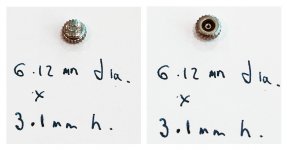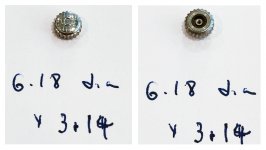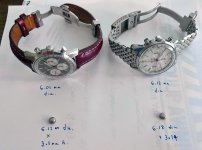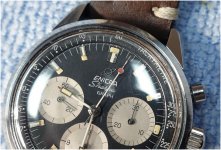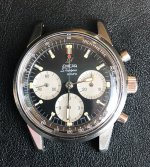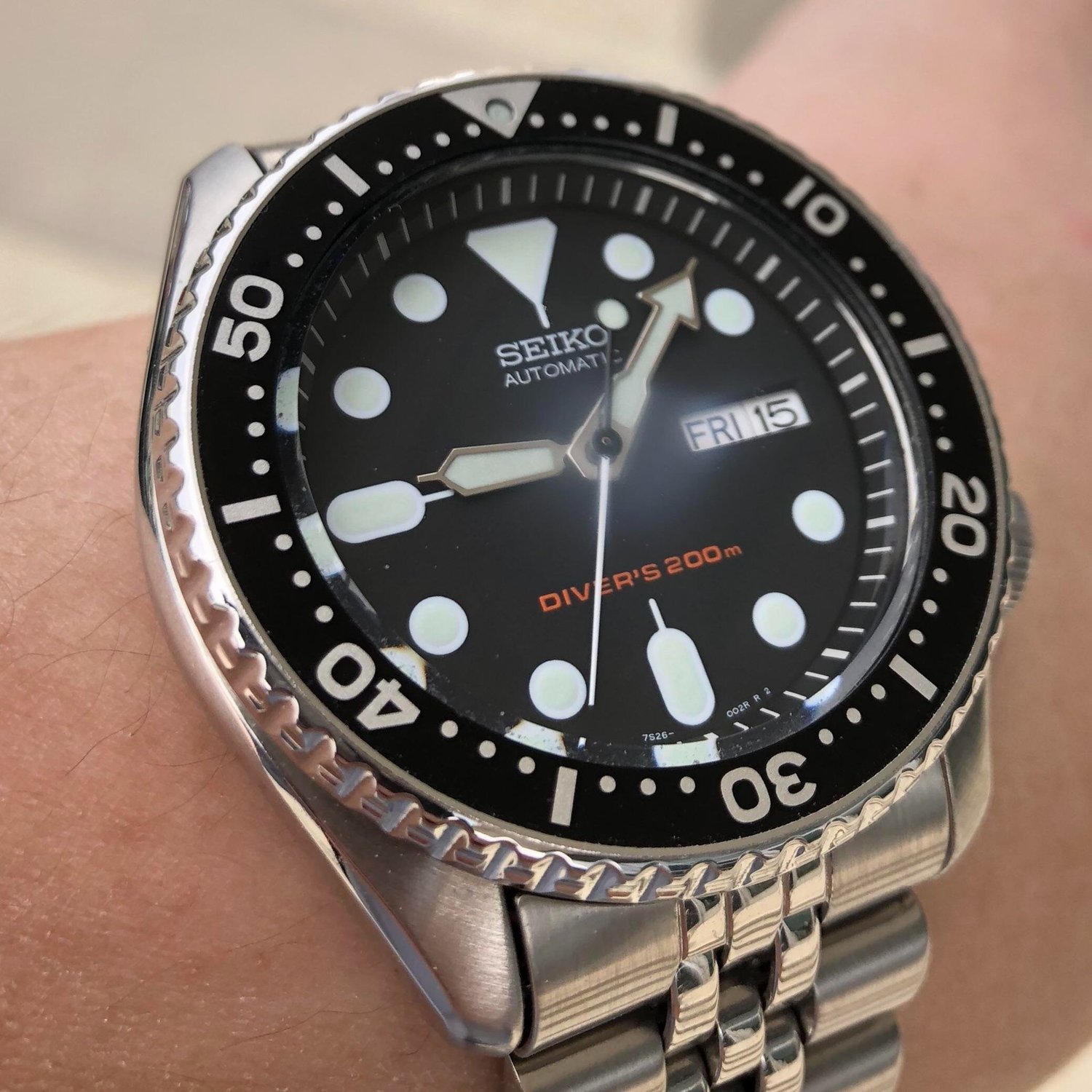The thread title is the gist of the matter, but below I will tell the tale that goes with it.
I've been sending my watches for full service to RGM in Mt. Joy, Pa for a number of years now and each time, the watch comes back running like new. Like most watchmakers, but not all, RGM states that the vintage watch is not waterproof. Basically, if the crown turns properly, there is no attempt made to replace any gaskets or gasket material.
There are some watchmakers who do not think the job is complete unless they attempt to waterproof the watch as well and they will go through some pains to replace the gasket on the crown.
Such is the case for Precision Horology, Ashton Tracy, where I have had my Sherpa Graph Mark Ib "Gray and White" for service.
He's pretty much finished the reassembly and testing, but in an effort to replace the gasket in the crown, he tripped over a problem.
The gasket was very hard and rubbing on the side of the watch making it stiff to wind and set. He decided to replace the gasket only to find that the gasket was not directly replaceable. He melted the old hard rubber to remove it only to discover that the stem was embedded into the crown with the rubber.
Here is his explanation:
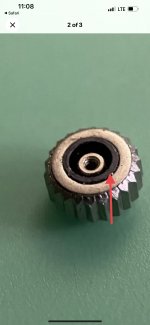

A closer look at the head of the stem:
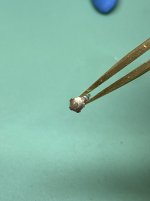
We can see that the head that contains the female threads was held in place by the embedded rubber. Once the rubber is gone, then the ratchet-like head just floats inside the crown with no means of attachment, In other words, the gasket is more than a gasket. It is the thing that holds the threaded part centered within the hollow inside crown.
Replacing the crown with a generic crown is a non-starter.
If I were to find an original crown where the rubber is not as hard as a rock, that would be a suitable solution.
Alternatively, Ashton is willing and able to further hollow-out the inside of the crown on a micro-lathe and then reduce the diameter of a generic crown to fit inside the original crown and Loctite it into position. A virtue of this approach is that a generic gasket will then be able to be installed and there will result, some degree of water-proofing or at least dust proofing better than any other 21st century solution.
Well then . . .
I'd rather just replace the crown with an original, if available.
Otherwise, I shall ask Ashton to do his bit of magic on the original crown.
Cheers,
Joe
I've been sending my watches for full service to RGM in Mt. Joy, Pa for a number of years now and each time, the watch comes back running like new. Like most watchmakers, but not all, RGM states that the vintage watch is not waterproof. Basically, if the crown turns properly, there is no attempt made to replace any gaskets or gasket material.
There are some watchmakers who do not think the job is complete unless they attempt to waterproof the watch as well and they will go through some pains to replace the gasket on the crown.
Such is the case for Precision Horology, Ashton Tracy, where I have had my Sherpa Graph Mark Ib "Gray and White" for service.
He's pretty much finished the reassembly and testing, but in an effort to replace the gasket in the crown, he tripped over a problem.
The gasket was very hard and rubbing on the side of the watch making it stiff to wind and set. He decided to replace the gasket only to find that the gasket was not directly replaceable. He melted the old hard rubber to remove it only to discover that the stem was embedded into the crown with the rubber.
Here is his explanation:
The crown was very stiff to wind due to the old gasket having gone hard, as old rubber tends to do. I greased the crown tube but it was still stiff. I planned on removing the winding stem to get a closer look at what we could do to address the issue. Upon heating the crown (to remove the loctite on the stem) the gasket pushed forward out of the crown by about 1mm. This is a stock photo I took from the internet.

At this point the stem then just turned inside the crown like it had released the hold. I dug out the old gasket to investigate further and found this:

A closer look at the head of the stem:

We can see that the head that contains the female threads was held in place by the embedded rubber. Once the rubber is gone, then the ratchet-like head just floats inside the crown with no means of attachment, In other words, the gasket is more than a gasket. It is the thing that holds the threaded part centered within the hollow inside crown.
Replacing the crown with a generic crown is a non-starter.
If I were to find an original crown where the rubber is not as hard as a rock, that would be a suitable solution.
Alternatively, Ashton is willing and able to further hollow-out the inside of the crown on a micro-lathe and then reduce the diameter of a generic crown to fit inside the original crown and Loctite it into position. A virtue of this approach is that a generic gasket will then be able to be installed and there will result, some degree of water-proofing or at least dust proofing better than any other 21st century solution.
Well then . . .
I'd rather just replace the crown with an original, if available.
Otherwise, I shall ask Ashton to do his bit of magic on the original crown.
Cheers,
Joe



